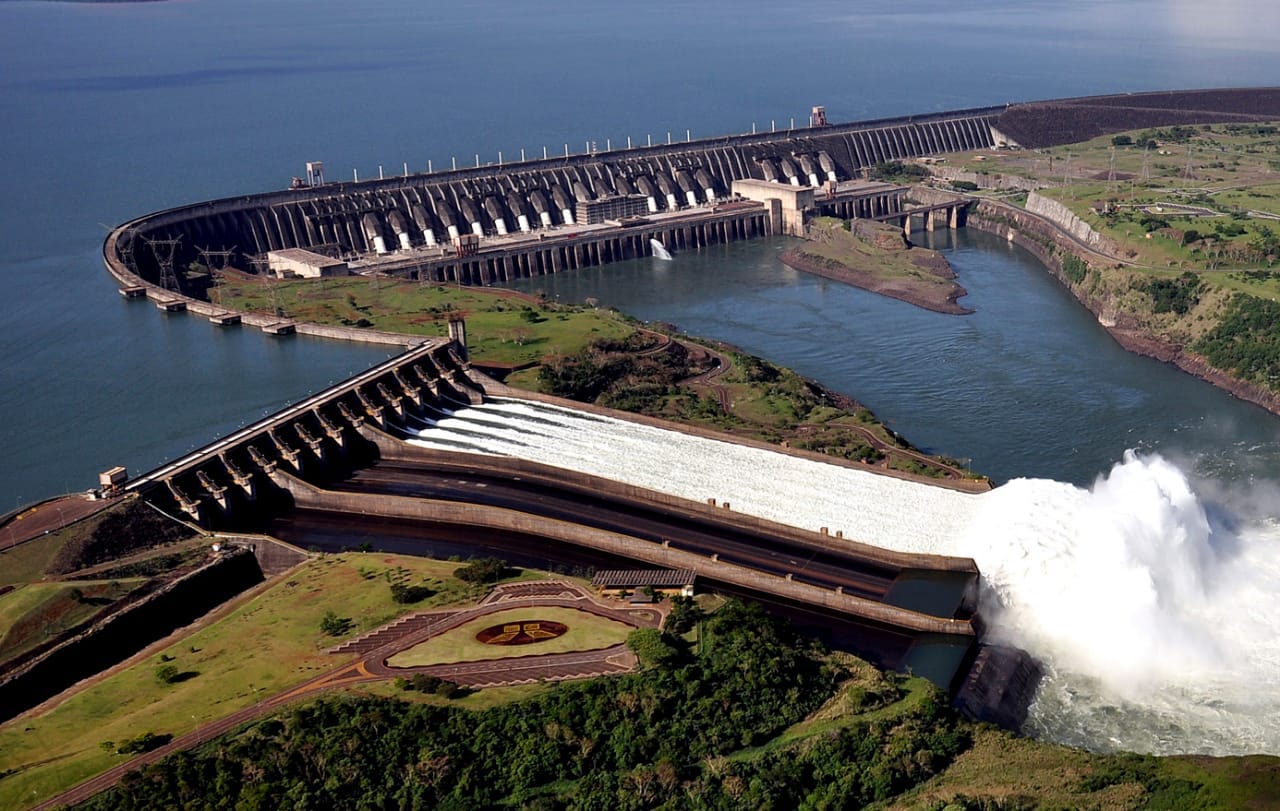The $80 Billion Itaipu Dam Scam
Miguel Carter: Paraguay should demand reparations from Brazil

Miguel Carter has spent years following the money behind Itaipu: the colossal hydroelectric dam stretching between Brazil and Paraguay, whose construction began in 1974. Born in Mexico in 1964 to missionary parents from the US and Uruguay who moved to Paraguay two years later, Carter was active in the Comité de Iglesias, a human-rights body which opposed the Stroessner regime.
He holds a PhD in political science from Columbia University, has consulted for the World Bank and the UN, and is the author of multiple books, including Voices of the People / Vozes de Povo, a landmark public opinion survey in Guinea-Bissau currently subject to a censorship dispute with the EU.
Carter is also the convenor of the forthcoming Itaipu, Causa Nacional, which brings together 32 experts to analyse the background, potential and pitfalls of an ongoing negotiation with Brazil over the future of the shared dam, whose financial arrangements expired in 2023.
In April, a source inside ABIN, the Brazilian intelligence agency, suggested to Globonews that Carter and his think-tank DEMOS had worked with the CIA to inflame Paraguayan public opinion against Brazil over Itaipu. The insinuation came amid damaging revelations that ABIN under Jair Bolsonaro had hacked the communications of Paraguayan officials close to the Itaipu talks.
The Paraguay Post called Carter to discuss the myth that Paraguay runs on 100 percent green energy, the astounding real cost of Itaipu, and why his findings have rattled Brazilian officials. This conversation has been edited for length and clarity.
Why is Itaipu such an important and painful issue for Paraguay?
Itaipu brings up the whole history between Paraguay and Brazil. The genocide in the nineteenth century has to stand as one of the largest in modern history by far: perhaps as many as two thirds of the population perished. It was absolutely traumatic for Paraguay. The president, Santiago Peña, spoke forcefully about the War of the Triple Alliance (1864-70) in his inauguration in 2023, comparing it to Russia’s invasion of Ukraine.
It’s there in the national imaginary. There was heroic resistance on the one hand, and on the other, the Paraguayans that went along with the Brazilians during the (1869-1876) occupation. And the same people who bemoan the situation also often take advantage of a profitable relationship with the Brazilians. That same dynamic clearly plays out with Itaipu.
Itaipu was really the product of Alfredo Stroessner, Paraguay’s dictator between 1954 and 1989, wanting it to happen. The meeting that appears to have triggered Brazil's interest in building Itaipu took place on a fishing expedition in the Pantanal, in the wake of Brazil's occupation of the Guairá Falls in 1965. It was Stroessner, the head of Petrobras and later president Ernesto Geisel, Sebastião Camargo, the biggest construction mogul in Brazil, and Stroessner’s secretary Conrado Pappalardo, who relates it in his memoirs.
These were the decades when Brazil was building highways, metro systems, the Rio–Niterói Bridge, nuclear power plants, the Trans-Amazonian Highway, and dams all over Brazil. Construction companies like Camargo Corrêa were becoming huge economic forces. And their modus operandi was detailed in Lava Jato [a billion-dollar corruption scandal that broke in 2015]. Itaipu was born out of conflict, and then has this sort of accommodation: “Let’s get on the gravy train.”
Since 1985, Itaipu has provided almost 18 percent of all the electricity consumed in Brazil. And 44.5 percent of all the energy that Brazil has consumed from the dam comes from Paraguay’s share. It’s sometimes been a source of resentment against Brazil for taking advantage of Paraguay.

Do you think the huge cost of the dam also plays a role in Paraguay’s mixed feelings about Itaipu?
It’s in the Guinness Book of Records as the world’s most expensive object. In 1973, the dam’s direct construction cost was supposed to be $1.5bn. This rose sharply over time. In 2018, Itaipú said the dam and auxiliary works had cost $12bn.
In 2023, when Itaipu claimed they’d finally paid up everything they borrowed, they came up with the figure of $63.5bn. But drawing on Itaipu’s balance sheets, we assess that the total cost was really $78.2bn. There was a bicicleteada: borrowing money to repay other debts.
The construction companies overcharged big time. By how much? That should be investigated. It’s reasonable to say they may have hiked the price by 100 percent.
Keep reading with a 7-day free trial
Subscribe to The Paraguay Post to keep reading this post and get 7 days of free access to the full post archives.


